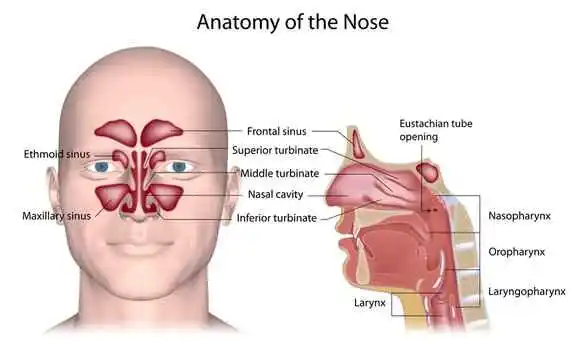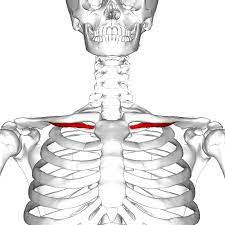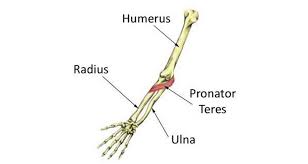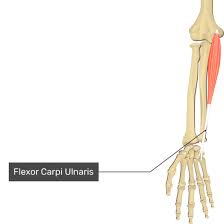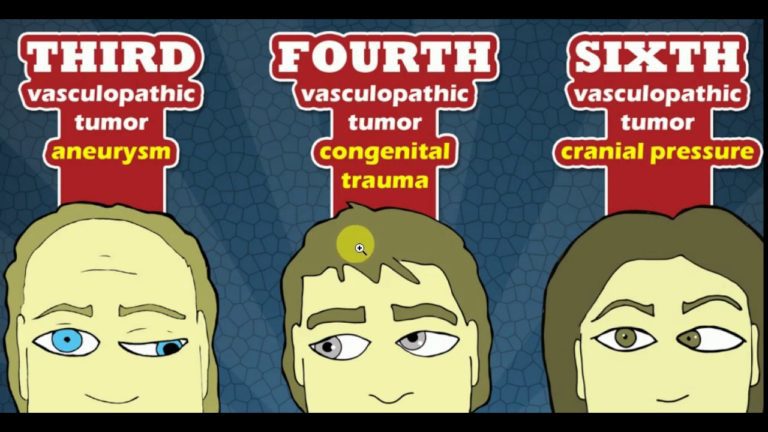Nose
Table of Contents
Introduction
In the human population, the nose becomes your main breathing system. Finally, it functions as an essential organ of the olfactory system. Air passes through to the nasopharynx and circulates in conjunction with the four grooves that form the three nasal conchae in each cavity.
Conchae and paranasal sinuses are both of the nose’s internal cavities and structures that collaborate to function as a single structure for preparing the air that can be inhaled. When it is related to inhalation, the nose plays an important part. sneezing causes aerosols in which droplets might include pathogens, it can spread illnesses.
Numerous cosmetic surgery treatments, called rhinoplasties, are available that correct different structural problems or modify the appearance of the nose. Reconstructive therapy is a synonym for these kinds of procedures.
Anatomy
- Nasal root: The crown of your nose, usually joins your face and is situated between your eyebrows.
- Nasal apex: The section of your nose that tapers off at the tip to a rounded shape and comprises your nostrils.
- Nasal dorsum: It’s located at the very tip of your nose, positioned across from the nasal origin and summit.
In addition, the inside of your nose features many different kinds of complex patterns, such as:
- Cilia: Polluting substances and particles can be identified in these miniature, hair-like filaments. The particles are then circulated through your nostrils and then evacuated via the inside of your body. Through every inch of your respiratory tract, they are present.
- Nasal cavities: These are openings that permit air to enter and exit. You require two equipment: one receive answer the question. Salivary glands line the cavities of your nasal cavities.
- Nerve cells: Your brain receives input from these cells, which additionally contribute to your sense of smell.
- Septum: Your nostrils are tied away from the majority of your body as the middle portion of your septum.
Structure
The nasal cavity’s emptied interior and the bony-cartilaginous structure of bone were made with many different bone and cartilage versions. Soft parts of the nose include skin, mucous membranes, epithelia, muscles, nerves, and blood vessels. Rhinoplasty ducts are situated in the mucous membrane in which the glands that produce oils are exposed to the skin. The nose twitches primarily because of the coordination of multiple muscles. By the way, the cartilages have been organized, airflow can be changed with flexibility according to muscle control.
Bones
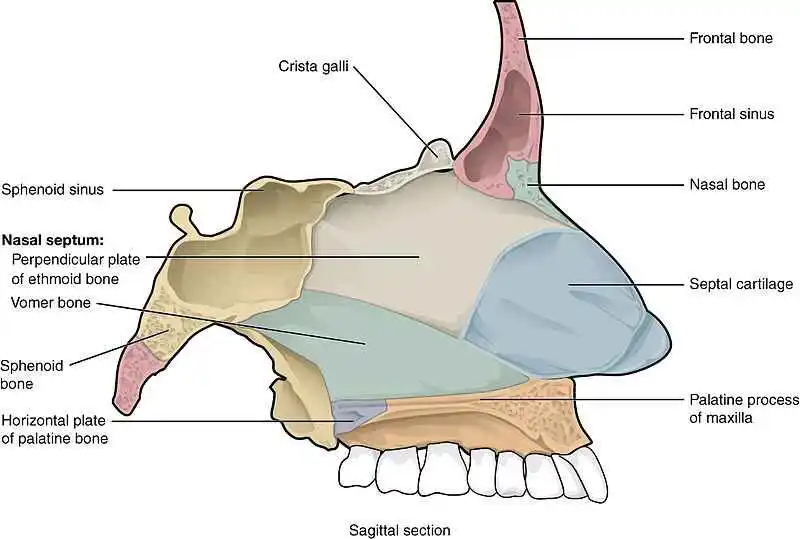
The nasal segment of the frontal bone, which opens in a serrated nasal notch and persists within the brow ridges, produces the most elevated bony parted of the nose.
Muscles
They provide an important function in the way one looks and ventilation. The procerus, nasalis, levator labii, and orbicularis oris of the inner side of the nostrils are the group of muscles that string up the nose. Since each nose muscle is separate, they work together to form a continuous layer in the nasal portion of the superficial muscular aponeurotic system (SMAS), combining all the muscles and ligaments.
The sinuses are pulled apart from the expansion of the naris skeletal muscle, and this could trigger pupils to be entirely or essentially organized.
Soft tissue
The skin of the nose participates in thickness obeusiouly its length. The skin at the tip is nearly as thick as the upper part and is covered by multiple big sebaceous glands.
External nose
The nasal dorsum, known as the nasal ridge, is the component of tissue that connects the nose’s root and tip. It could appear in the user interface in a range of scenarios.
Nasal cavity
The nasal vestibule and the nasal cavity simultaneously have identical impacts on the nasal cavity, which is an important internal cavity of the nose regarding two regular aspects. The frontmost segment of the nasal cavity, the nasal vestibule, is cartilaginously coated. The vestibule and the balance of the nasal cavity are divided by a mucous ridge called the limen nasi, which also indicates what happens from the vestibule’s skin to the respiratory epithelium of the nasal cavity. The mucocutaneous junction is a separate term for this area, which has a stuffed microvasculature.
The nasal septum separates the nasal cavity into two cavities, each of which is accessible through an exterior nostril. Two tubes in the upper part of the nasal cavity, sometimes identified as choanae ( which are also referred to as posterior nostrils), contain the nasopharynx and the respiratory system.
Paranasal sinuses
The nasal cavity’s mucosa extends into the paranasal sinuses, which are its chambers. The sinonasal region, recognized as the sinonasal tract, is comprised of the nasal cavity and the sinuses that surround it. Its anatomy is considered to be separate and extensive.
Blood supply
Blood is provided to the nose over the carotid arteries utilizing the retina, maxilla, and aesthetic capillaries. These arteries’ branches anastomose to establish plexuses inside and around the nasal mucosa.
The ophthalmic arteries can be supplied by the anterior as well as posterior ethmoidal arteries, which extend to the roof, the highest part of the cartilage septum, and frontal and ethmoidal sinuses.
The nasal cavity’s outer borders are supplied by the ethmoid and sphenopalatine arteries.
Nerve supply
The retinal nerve (CN V1) and upper jaw branch (CN V2) are the nerves that supply breathable air to the septum and paranasal sinuses, individually. The nasal mucosa of the nasal cavity is separated into two parts dependent on the position of nerve supply: the anterior, elevated part, or inferior, and the posterior, lower part.
Function
Respiration
The nose is the breathing problem mechanism’s first cardiovascular in the nasal passages. Its primary purpose as a lung is to oxygenate and purify the air by the warming, moisturizing, and cleaning of inhaled pollutants. Large particles have been caught by nasal hair in the nostrils, preventing them from entering the lungs.
The three nasal conchae in each cavity provide four grooves that operate as air routes, causing air to be conveyed to the nasopharynx and circulated. An integrated system for conditioning the air inhaled by the nose originates from the internal structures and cavities, such as the paranasal sinuses and conchae.
The nasal mucosa plays a significant part in this functioning as well, and the conditioning of the air that results before it enters the lungs is extremely important for the internal environment and normal lung function.
Sense of smell
The nose additionally takes on an essential function in the olfactory system. Olfactory receptor neurons, which have significance for the sense of smell (olfaction), are found in this region of concentrated cells. The upper nasal cavity’s olfactory mucosa is home to a type of nasal gland termed olfactory glands, which are also known as Bowman’s glands, which aid with smell.
Speech
Lung pressure is used for generating speech. By modifying airflow via the nose, a technique known as nasalization, this can be controlled. A class of click consonants known as nasal clicks is also produced by nasal airflow.
Clinical significance
One of the most prominent nose-related medical conditions is epistaxis or nosebleeds. A large number of nosebleeds develop in Kiesselbach’s plexus, a vascular plexus where four arteries are found in the lower front segment of the septum. Woodruff’s plexus is a venous plexus constructed out of significant veins with thin walls that are found in the rear region of the inferior meatus.
Nasal congestion is another common ailment. Its condition. An infection, typically sinusitis, or another type of inflammation of the nasal lining is called rhinitis, which can include both allergic and nonallergic rhinitis. Chronic nasal blockage that forces breathing through the mouth can significantly reduce or completely stop the ability to relax the nostrils. When breathing becomes difficult for a youngster, nasal flaring might be observed. This can also happen in other illnesses, like Parkinson’s disease, Kallmann syndrome, or after trauma.
FAQ:
What exactly is the nose’s function?
The air you inhale is warmed, purified, and tempered from it. Your olfactory organs—strategically situated there—give you a sense of smell. Words originating with “rhino-” (such as rhinoplasty) or “naso-” (such as nose and throat) typically relate to your nose.
Why does the nose matter?
Your health depends on your nose. It cleanses the air you breathe of dirt, germs, and allergies. It also warms and lubricates the air to prevent the drying out of your lungs and the tubes that lead to them. The nerve cells that sustain your sense of smell originate in your nose.
What are the nose’s advantages?
The structure of your nose is to assist with safe, effective, and appropriate breathing. Dust, allergies, and pollen are cleaned out by nasal hairs, helping to keep these substances out of your lungs.
A nasal problem: what is it?
Polyps, upper respiratory infections, allergic rhinitis, chronic rhinosinusitis, tumors or other neurological conditions, a comprehensive history and physical examination using an endoscope, objective smell testing, and maybe an image are all part of the evaluation processes for this illness.
Which therapies are typically utilized to treat nose concerns?
Nasal endoscopy is a procedure that is regularly carried out. It facilitates medical professionals’ recognition and treatment of several nasal ailments, including polyps, obstructions, and infections.
References
- Professional, C. C. M. (2024c, August 20). Nose. Cleveland Clinic. https://my.clevelandclinic.org/health/body/21778-nose
- Human nose. (2024, September 15). In Wikipedia. https://en.wikipedia.org/wiki/Human_nose
- Wikipedia contributors. (2002, August 24). Nose. Wikipedia. https://en.wikipedia.org/wiki/Nose
- Galarza-Paez, L., Marston, G., & Downs, B. W. (2023, July 24). Anatomy, head and neck, nose. StatPearls – NCBI Bookshelf. https://www.ncbi.nlm.nih.gov/books/NBK532870/
- The Editors of Encyclopaedia Britannica. (2024, September 4). NOSE | Description, Functions, & Facts. Encyclopedia Britannica. https://www.britannica.com/science/nose

